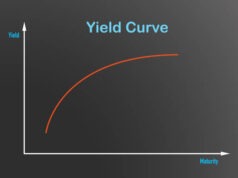
Do you ever feel paralyzed by how much data you have to sift through?
Whether you’re an investor relations officer or sell-side analyst, you have access to an overwhelming amount of data. Your intelligence spans events, trends, forecasts, stock performance, regulatory updates, and individual investor digital footprints.
But just because you have access to more data than ever before doesn’t mean you can use all of it. You may not even be able to extract actionable insights from these digital phenomena.
That’s where engagement analytics comes in. This innovative way of collecting, visualizing, processing, and analyzing data can help you understand IR intelligence and online behavior. And, more importantly, use these insights to make informed decisions about your next step.
Engagement Analytics: A Definition
As one of the latest buzzwords to take the capital markets world by storm, “engagement analytics” is gaining a lot of traction but not much clarification. So, here’s an engagement analytics definition that helps bring light to the situation:
- Engagement analytics refers to the way software synthesizes and analyzes your data so that you can make conclusions from it. It’s a kind of digital alchemy converting raw data into meaningful information.
While this data analysis isn’t particularly new within the data science world, the breadth of the data these IR tools can crunch is ground-breaking.
The latest software is designed with today’s expansive digital landscape in mind. It’s capable of aggregating information from immeasurable human interactions, online behaviour, and digital phenomena.
3 Professionals with Skin in the Game
Better analytics don’t benefit just one corner of the capital markets. As digital interactions evolve and proliferate, the effects are far-reaching across the industry, including sell-side, buy-side, and investor relations professionals.
Sell-Side Analysts
Sell-side professionals stand to gain by better data analytics as they face unique challenges today. From fee compression to the risk of disintermediation and everything in between, these changes have altered the way sell-side professionals’ work.
Innovative apps can help these professionals make connections with IROs and buy-side professionals at a time when their engagements are endangered. Technology with sell-side representation can also help you elevate your sell-side investor event or webcast, collecting vital engagement analytics.
Investor Relations Officers
Better known as IROs, investor relations officers are now incorporating direct sales and marketing into their strategies. They’re frog-leaping over investment banks to target investors directly.
Identifying which investors within their shareholder base are ripe for targeting can be challenging without advanced engagement analytics and data modelling. These advanced IR tools aggregate data in one, simple-to-use space.
Buy-Side Professionals
With IROs shifting priority to engage directly with investors, the buy-side has a similar change in opportunities. And just like IROs, buy-side professionals may face challenges with this task if they can’t interpret corporate issuers’ information if it’s not centralized with holistic tech.
Bottom Line
With the right technology, data doesn’t have to overwhelm you or your team. Thanks to the latest engagement analytics tools you can process impressive data sets and extract previously unattainable information to improve this year’s strategy.


































